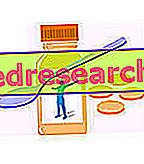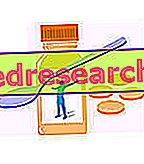AMIKAN ® is a drug based on Amikacin sulfate
THERAPEUTIC GROUP: Antibacterials - Aminoglycosides
IndicationsAction mechanismStudies and clinical effectiveness Usage and dosage instructionsWarnings Pregnancy and lactationInteractionsContraindicationsUndesirable effects
Indications AMIKAN ® Amikacina
AMIKAN ® is indicated for the short-term treatment of even serious infections sustained by microorganisms sensitive to amikacin.
This antibiotic has been clinically effective in the treatment of septicemia, respiratory, genitourinary, osteo-articular, nervous, cutaneous, and subcutaneous infections.
Mechanism of action AMIKAN ® Amikacina
AMIKAN ® owes its great therapeutic efficacy to the presence of the active ingredient amikacin, an antibiotic belonging to the family of aminoglycosides particularly effective against gram-negative microorganisms.
Taken parenterally, given the high sensitivity to the gastro-intestinal environment, amikacin reaches the maximum plasma concentration in just a few minutes, uniformly distributing between the various tissues and biological fluids.
Similarly to the other aminoglycisides, this active ingredient also crosses the bacterial wall with the aid of a membrane transporter, concentrating at therapeutic doses in the cytoplasm of the microorganism, where by binding the 30S ribosomal subunit, it inhibits the normal processes of protein synthesis.
It is precisely the synthesis of aberrant proteins to alter the vitality of the target micro-organisms, both compromising the normal metabolic activities and damaging the cell membrane with the consequent impairment of the hydro-saline homeostasis of the cell.
Once the therapeutic activity is finished, the amikacin is eliminated as it is through the urine.
Studies carried out and clinical efficacy
1 AMIKACINA IN THE TREATMENT OF APPENDICITIS
Int J Infect Dis. 2011 Aug; 15 (8): e569-75. Epub 2011 Jul 5.
Clinical trial demonstrating the efficacy of amikacin in improving symptoms while reducing possible complications, such as peritonitis, in pediatric patients with perforating appendicitis.
2 . EMBRIOTOSSICITY FROM AMIKACINA
Toxicol Mech Methods. 2012 Feb; 22 (2): 151-8.
Yet another experimental study that demonstrates the potential teratogenic and embryotoxic effects of amikacin. The numerous experimental evidences present in the literature, although not supported by clinical trials, reinforce the contraindications to the use of amikacin during pregnancy.
3. AMIKACINA IN THE TREATMENT OF RESPIRATORY DISEASES
Eur J Clin Microbiol Infect Dis. 2011 Dec 25.
Recent work that evaluates the possibility of using new delivery systems for amikacin like the aerosol in the treatment of respiratory pathologies sustained by non-tuberculous mycobacteria.
The first data show an important improvement in the health conditions of the treated patients.
Method of use and dosage
AMIKAN ®
Vials for intramuscular use from 500 mg to 1000 mg of amikacin.
The formulation of the correct dosage and the relative timing of intake should be defined by your doctor based on the patient's health status, the severity of the clinical picture in place and the possible presence of renal or auditory-vestibular pathologies.
Note the half-life of the drug the overall daily dosage should be divided into 2-3 different administrations.
Warnings AMIKAN ® Amikacina
Treatment with AMIKAN ® must necessarily be preceded by a careful medical examination in order to exclude the possible presence of conditions incompatible with the intake of aminoglycosides.
Precisely for this reason the whole therapeutic procedure should be supervised by your doctor through the assessment of the patient's overall health status and in particular of the renal and auditory-vestibular state.
Particular attention should also be paid to all those patients predisposed to the development of renal and otorhinolaryngological diseases.
Prolonged use of the drug, in addition to increasing the risk of sensitization to amikacin, could facilitate the selection of microbial strains resistant to drug therapy, which can therefore aggravate the patient's clinical conditions.
Following the appearance of side effects, the patient should immediately contact his doctor with whom he may decide to suspend the therapy in progress.
PREGNANCY AND BREASTFEEDING
The absence of clinical trials able to characterize the safety profile of amikacin on the fetus and the natural ability of this active principle to accumulate in breast milk, extend the aforementioned contraindications to the use of AMIKAN ® also to pregnancy and the subsequent period breastfeeding.
Interactions
Once the potential side effects of aminoglycoside antibiotic therapy are known, the patient should pay particular attention to the simultaneous intake of nephrotoxic and ototoxic active ingredients such as some diuretics.
Neuromuscular paralysis and breathing difficulties were sometimes observed following the simultaneous intake of amikacin and anesthetics or muscle relaxants.
Contraindications AMIKAN ® Amikacina
The use of AMIKAN ® is contraindicated in case of hypersensitivity to the active ingredient and its excipients, during pregnancy and breastfeeding.
Undesirable effects - Side effects
Aminoglycoside therapy exposes the patient to different side effects, some of which are clinically relevant.
Different clinical trials and an expected post-marketing monitoring show the appearance, especially in predisposed patients, of ototoxicity with auricular buzzing, tinnitus, vertigo and partial deafness and nephrotoxicity with urinary anomalies, hyperazotemia and hypercreatininemia, following the administration of aminoglycosides such as 'amikacin.
Note
AMIKAN ® is a prescription-only drug.



